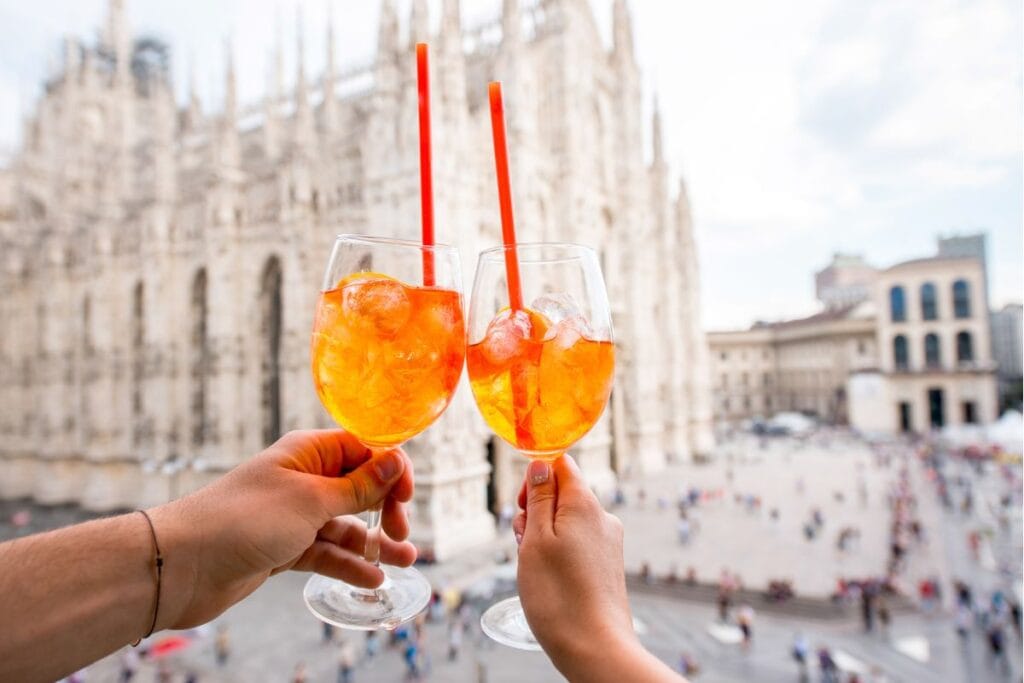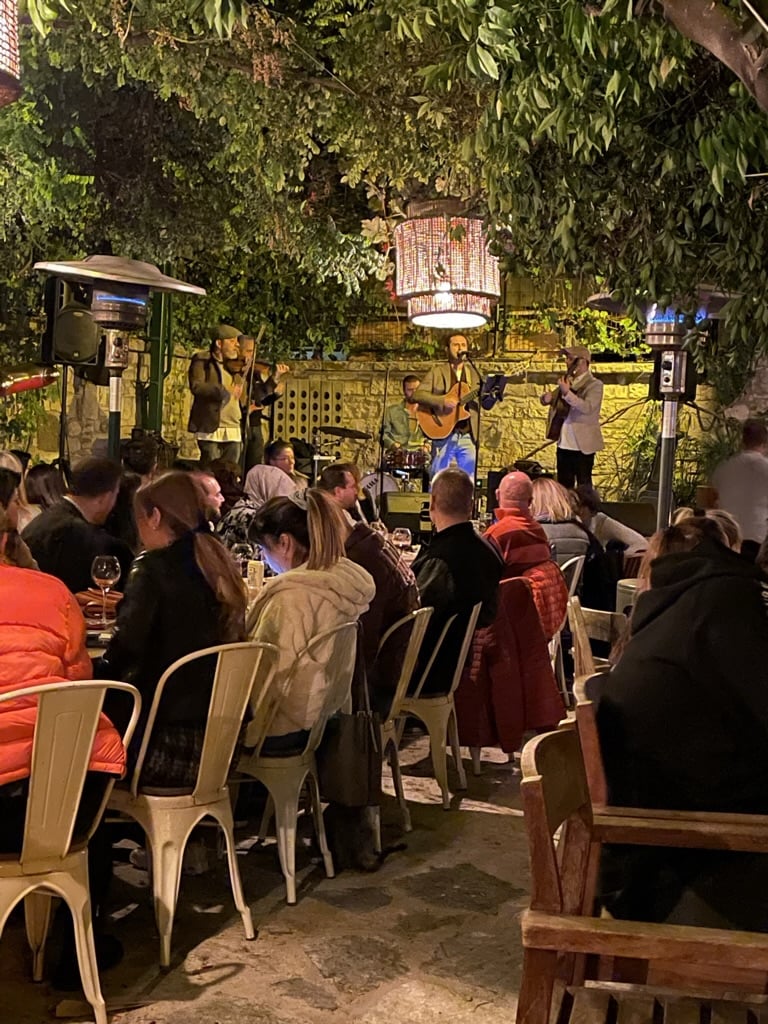Drinking Age In Italy?! Legally Vs. Practically
Please note that some of the links may be affiliate links, and at no additional cost to you, I earn a small commission if you make a purchase. I recommend only products & companies I love and use, and the income goes back into making this little blog successful!
It’s been a long time since I’ve wondered about drinking ages, but here we are, answering the age-old question all teens wonder (and scheme about) when visiting Europe – What is the legal drinking age in Italy?
⭐️ SPOILER: The legal drinking age in Italy is set at 18. ⭐️
So what does this mean practically in Italy?!
- If you’re on a family vacation with your kids or grandkids, know that it’s totally cool if a minor is drinking with their family in public in Italy.
- The lower Italy drinking age reflects a relaxed, moderate drinking culture in Europe, where drinking a glass of wine or a beer with your family and friends is part of the culture.
I really appreciate Italians’ teaching their younger generations to cherish and consume wine responsibly in moderation, contributing to the cultural value of camaraderie and shared experiences. Let’s dive deeper into the whole legal vs practical debate of the drinking age in Italy.
The Legal Drinking Age In Italy
The drinking age in Italy is 18 years old. Here’s what this means:
❌ SELLING: It is illegal to sell alcohol to anyone under 18 in a restaurant, bar, or shop in Italy.
❌ SERVING: It’s illegal to serve alcohol to anyone under 16. If you do, you could go to jail for up to a year and have to pay a big fine.
❌ CONSUMING: It’s illegal to drink alcohol if you are under 18.
The drinking age in Europe is also 18 years old, with a few hardcore exceptions of Belgium, Germany, Austria, and Denmark, where the minimum legal drinking age is 16!
So, for my scheming 18 to 21-year-old American college students, it does not matter what your citizenship is. These drinking laws cover you while you are on European soil.
👉 PRO TIP: Just in case someone asks you for your identification or if you look exceptionally young (congrats, hunny!), I recommend having an ID on you while wining and dining in Italy.
To be very real with you, most of these alcohol-related laws are not strictly enforced – unless you are drunk in public. And even then, there’s no criminal or monetary punishment – they will likely just make you throw the alcohol away and tell your parents you’ve been acting up (if you’re Italian).
Exceptions To The Rule
Here’s where a bit of the practicality of drinking in Italy comes in.
👉 Exception: Party Time 👈
Drinking rules in Italy go out the window at large festivals, fairs, markets, and carnivals – where selling to a minor and drinking is not monitored at all.
👉 Exception: Drinking With Family 👈
For those heading out on a family vacation with their kids or grandkids, know that it’s totally cool if a minor is drinking with their parents or family in public in Italy. 🥳 Everything will be okay as long as they’re not getting out of control or drunk.
I remember summers in Romania and vacations in France when I was maybe 16 or 17, and having a glass of wine with everyone out at dinner. My parents introduced me to alcohol (a beer, a glass of wine) around 15 by letting me taste a bit of what they were drinking at dinner. From there, they taught me how to tell the difference in the variety of wine and beer, and what the different flavors were, and encouraged me to taste and decide things for myself.
With this more experiential education about alcohol also came the cautionary discussions about alcoholism, how to behave when you’re drinking in public, and what happens when there is abuse or excess of alcohol. I think because drinking wasn’t taboo, I developed a healthier relationship with alcohol compared with my peers in Texas who had not tasted alcohol until they were 21, at which point they binge-drank their way into most of their college careers. Just my two cents…
The Practical Drinking Age In Italy
Ah, the charm of Italy! The land of art, history, and Aperol Spritz. The cities, with their quaint little streets, impressive architecture, and delicious gelato, are favorite destinations for everyone.

While the law states that the minimum Italy drinking age is 18, the reality is that it’s hardly enforced. No place in Italy is going to refuse anyone who looks over the age of 16ish a glass of wine.
Culturally, Italians don’t even think that a little wine is all that bad for teens. In fact, most families let their kids taste whatever the family is drinking at the table – not as a gateway to alcoholism, but as an experience to quelch the curiosity and mystery around alcohol.
👉 PERSONAL FUN FACT: Romanian culture is similar to Italian, and so I had my first sip of alcohol (plum brandy) at my grandma’s for lunch when I was 15 years old.
So go ahead and try that beer or order that glass of Montepulciano if you’re 18 and up in Italy. Just don’t overdo it and make all of us Americans look like drunk asses who were born yesterday!
The reverence for age-old traditions and fostering of a relaxed, moderate drinking culture embody the essence of Italian life – La Dolce Vita. And I am here for it!
Shifting Culture of Drinking In Italy
Europe’s drinking culture is a fascinating blend of tradition, history, and social connection that varies from country to country.
Whether you are sipping a red wine in a romantic Italian bistro, downing a frothy beer in a German beer garden, or enjoying a glass of port wine in a Portuguese tavern, it becomes evident how integral alcohol is in the European way of life.

This brings me to my next point. Alcohol consumption is a matter of concern for societies around the world, and this is especially true in Europe and when it comes to minors. This is why we have minimum legal drinking age laws.
IMPORTANT STUFF: There are several compelling reasons why alcohol is banned for individuals below the legal drinking age.
First and foremost, alcohol can harm adolescents’ developing brains, potentially leading to long-term cognitive impairments and mental health issues.
In addition, alcohol is known to lower inhibitions, increase the likelihood of engaging in risk-taking behaviors, and impair judgment. For minors, these altered states of mind can result in serious consequences such as injuries, unprotected sex, and dangerous driving.
So back to the drinking age in Italy. Way back in 2012, the drinking age in Italy was regulated and is now 18 years old, similar to most of Europe.
Beyond what the governments are doing – adding training, limiting false advertisements, setting minimum drinking ages, and adding taxes to alcohol, drinking across most of Europe continues to integrate habits of responsibility into its culture. Most drinking as a youth in Italy includes sipping on a Spritz during an aperitivo with friends or enjoying a glass of Chianti at a family dinner.
And according to the World Health Organization, efforts to reduce drinking have decreased rates of the following diseases: liver cirrhosis, cancer, cardiovascular diseases, and injury from drinking-related shenanigans!
What I really appreciate about Italians is that they teach their younger generations to cherish and consume wine responsibly in moderation, contributing to the intrinsic cultural value of camaraderie and shared experiences.
Best Drinks To Try In Italy
Since we’re on the topic, I wanted to share some of my favorite alcoholic and nonalcoholic drinks from Italy.
Favorite Italian Drinks: Non-Alcoholic
Let’s start with what’s legal for everyone in Italy:
🥤 Sodas: Coca-Cola (which tastes like Mexican Coke because it has real sugar), Pepsi, and Fanta.
🥤 San Pellegrino: In all its beautiful flavors, this is one of my favorites on the beach.
🥤 Peroni Libera 0%: A nice non-alcoholic beer.
Favorite Italian Drinks: Alcoholic
🍹 Aperol Spritz: Perfect for those lunch dates and days on the beaches of Italy.
🍹 Negroni: A nighttime drink and one of my favorites, I describe this gin cocktail like I describe Italian lovers – a little sweet, a little bitter, and all-around sexy as hell! ❤️
🍹 Limoncello: Usually consumed after every meal, it’s an insanely sweet lemony shot that helps you digest your food (and anything else that’s left of you by the end of the meal).
🍹 Bellini: The Italian version of a mimosa, it’s essentially fizzy prosecco with a splash of fruit syrup or juice.
🍹 Prosecco: For those purists, this is how you say Champagne in Italy. 😊

Fun Facts: Drinking Age In Europe
Here are some frequently asked questions regarding how old you have to be to drink in Italy and Europe.
Can an 18-year-old American drink in Italy?
Yes. No matter your citizenship, you adhere to the law of the land. So go ahead and order that glass of Montepulciano if you’re 18 and up in Italy. Just don’t overdo it and make all of us Americans look like drunk asses who were born yesterday!
Do they ID you in Italy?
Not really, but if you look under 10 years old and are trying to buy alcohol, have it on you just in case.
Where is 16 the drinking age?
Belgium, Denmark, Austria, and Germany have a minimum legal drinking age of 16. But honestly, it’s as enforced as the 18-year-old drinking rule in the rest of Europe.
What country has the youngest drinking age?
More than half of the world’s countries have a minimum drinking age of 18 years old. Some countries, like America, have a higher age limit of 21. But there are a few countries in Africa, mainly Mali and the Central African Republic (near Chad and Sudan), with a legal drinking age of 15!
Conclusion: The Drinking Age In Italy
Interestingly, and contrary to popular belief, Europeans generally prioritize responsible consumption over excessive indulgence, appreciating each beverage’s unique tastes and flavors. And so the legal age for drinking in Italy and most of Europe will be 18 years old.
Drinking in Europe and Italy is not just an act of leisure; it is a chance to explore centuries-old traditions, exemplary craftsmanship, and a sense of unity that transcends cultural barriers. Cheers to that!
